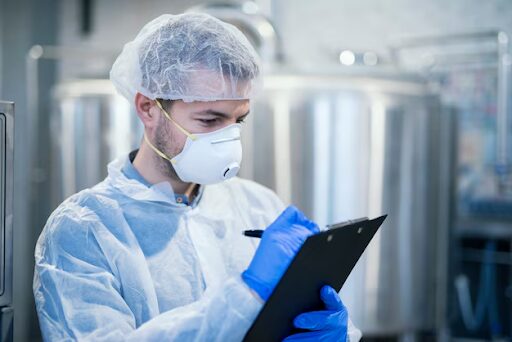A laboratory safety inspection provides compliance, efficiency and a safe working environment. Whether you are preparing for a regular check or an audit, following these steps will help you have a successful inspection.
Step 1 – A Clean Work Environment
Once the dedicated inspector arrives, they will assess your lab’s cleanliness and organisation throughout the laboratory safety inspection. A clean, compliant work environment reduces risks and hazards while increasing efficiency.
1 – Keep surfaces, equipment and storage areas clean from spills and equipment clutter.
2 – Correct disposal of your expired chemicals and biohazardous wastes.
3 – Labeling all containers correctly to prevent future accidents from occurring.
Step 2 – Organised Documents
Documentation is important when preparing for a laboratory safety inspection. The inspector will review all records to confirm compliance with safety and regulations. Ensuring all documents remain accurate and organised for easy access is essential.
1 – Safety Data Sheets records should be up to date and available to show an understanding of chemical hazards.
2 – Chemical storage should stick to regulatory guidelines and records to mirror correct storage.
3 – Emergency exists and fire extinguishers should be marked and well documented in safety protocols.
Step 3 – Up To Date and Calibrated Equipment
Correctly stored equipment allows accurate results and compliance. A laboratory safety inspection will check that each piece is calibrated and that records are up to date. Without this, inaccurate data may result.
1 – Confirm all equipment is calibrated with up-to-date service records, keeping hold of certificates and maintenance logs for easy access.
2 – Check equipment is working correctly. If malfunctioned, it can lead to incorrect research and safety.
3 – Follow maintenance guidelines, with regular servicing to prolong the equipment’s use duration to prevent breaks.
Step 4 – Up To Date Team Training
A laboratory safety inspection checks that staff can correctly follow procedures and safely handle equipment in an emergency. Up-to-date training reduces risks and reinforces safety. Accurate and accessible records are also important when preparing for a laboratory safety inspection.
1 – Have a refresher on PPE and safety protocols to confirm correct use.
2 – Making sure all team members understand emergency procedures such as chemical spills and first aid.
3 – Assignment of roles for the inspection to allow staff to provide documentation and answer any inspector questions.
Step 5 – Internal Mock Inspection
A mock laboratory safety inspection allows your team to internally identify compliance gaps, allowing your lab to be prepared before inspection. This proactive approach minimises risks and confirms safety protocols when preparing for a laboratory safety inspection.
1 – Performing a mock laboratory safety inspection as if it is accurate, recognising areas to improve when the real inspection occurs.
2 – Review documents and safety protocols to confirm all records (such as training logs and maintenance records) are accurate and accessible.
3 – Checking the lab organisation is confirmed through safety equipment, such as fire extinguishers and more, which are correctly maintained.
4 – Fixing any issues instantly to avoid further last-minute corrections, as well as confirming chemical storage, equipment calibration, and safety training are up to standard.
Laboratory safety inspections allow compliance and a safe working environment. Following these steps prepares your lab for a smooth inspection, whether a regular or an accurate safety inspection.
By maintaining cleanliness and completing internal mock inspections to ensure staff training and documents are up to date, you can reduce risks and improve work efficiency in the lab. Preparing for a laboratory safety inspection allows your lab performance to run smoothly and meet all safety standards.
For more help, contact us today for expert solutions to help your lab operate at its best.

